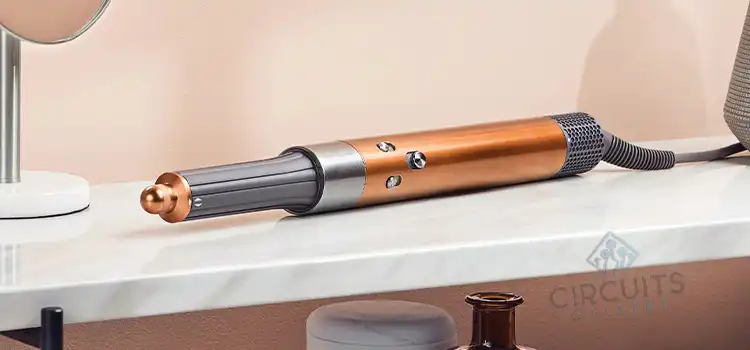Is Dyson Airwrap Dual Voltage? | Is It Dual Voltage Compatible?
No, the Dyson Airwrap is not dual voltage. It is designed to operate at the specific voltage of the country it was purchased in. In the event that you purchased your Airwrap in the US, it would be intended for 120V.
Assuming you got it in the UK or Europe, it would be intended for 220-240V. Endeavoring to involve the gadget in a country with an alternate voltage could prompt harm and potential well-being risks.

What Voltage Does Dyson Airwrap Use Abroad?
The Dyson Airwrap is designed to work as per the electrical voltage of the country wherein it is sold. For instance, if you buy your Dyson Airwrap in the United States, it is made to run on 110-120V electricity, but if you buy it in the UK, Europe, or Australia, it is made to run on 220-240V electricity.
As a consequence of this, attempting to use the device in a nation where the voltage supply does not conform to its configuration may result in the device failing to function or possibly being damaged.
Why is Dyson Not Dual Voltage?
The Dyson Airwrap’s motor’s design is the primary cause of its lack of dual voltage capability. A high-speed digital motor that works best at a particular voltage powers the device. The motor design would need to be significantly altered to accommodate dual voltage functionality, which could affect the device’s overall performance.
Here are some more detailed views on why is Dyson, not dual voltage:
Decoding the Digital Motor Design in Dyson Airwrap
The high-speed digital Dyson V9 motor, which powers the Dyson Airwrap, is where understanding of the device begins. The V9 produces an amazing 3.2 kilopascals (kPa) of pressure and spins at an incredible 110,000 revolutions per minute (RPM), in contrast to conventional motors.
These astounding numbers play a crucial role in producing the Coanda effect, which enables the Airwrap to style hair without applying a lot of heat and reducing heat damage.
Single Voltage Choice | Delving into Motor Efficiency and Performance
The Dyson Airwrap’s motor design is solely responsible for the lack of dual voltage capability in that product. The best power output, efficiency, and longevity are guaranteed by motors built for a certain voltage range, such as 110-120V in North America.
Theoretically, modifications to enable dual voltage operation might decrease the motor’s RPM by 20–30% and the pressure produced by a comparable percentage. This is because such alterations would necessitate significant engineering adjustments, which may have an impact on these factors.
Dyson’s Uncompromised Performance over Dual Voltage
Dyson chose to put the performance and longevity of the Airwrap’s high-speed motor ahead of the ease of dual voltage compatibility while being aware of the possible trade-offs. While this choice may place limitations on consumers who often travel abroad, it guarantees that the Airwrap will function to the high standards anticipated of Dyson goods.

This choice exemplifies Dyson’s persistent dedication to technical excellence—the desire to produce strong, effective appliances that excel in their intended functions. Global voltage adaptability is not as important to Dyson as retaining the Airwrap’s high-speed motor performance and, thus, its unmatched aesthetic capabilities.
Frequently Asked Questions
Can I travel with my Dyson Airwrap?
Although your Dyson Airwrap can travel with you, due to its non-dual voltage, you should take important precautions. It is essential to comprehend the voltage supply in your destination nation.
If the device is plugged into an outlet with a voltage that is different from how it is set up, it could cause damage that can’t be fixed and be an electrical hazard. As a result, it is necessary to do extensive research on the voltage standards of your destination before your trip and to make the appropriate preparations.
Do I need a voltage converter for my Dyson?
If you plan to travel to a country with a voltage standard that is different from your Dyson Airwrap’s, you will need a voltage converter. This device matches the voltage range that your device can handle with the voltage from the power outlet.
It is vital to take note that a straightforward fitting connector won’t fill the need. An adapter only makes it possible for the plug on your device to fit into various-shaped outlets; it does not change the voltage. To forestall any harm brought about by voltage inconsistencies, a voltage converter turns into a flat-out need.
Conclusion
The Dyson Airwrap’s motor design, which prioritizes performance and longevity above universal voltage adaptation, prevents it from supporting dual voltage. To maintain the safety and lifespan of the equipment, users must obey the regional voltage requirements.
Subscribe to our newsletter
& plug into
the world of circuits